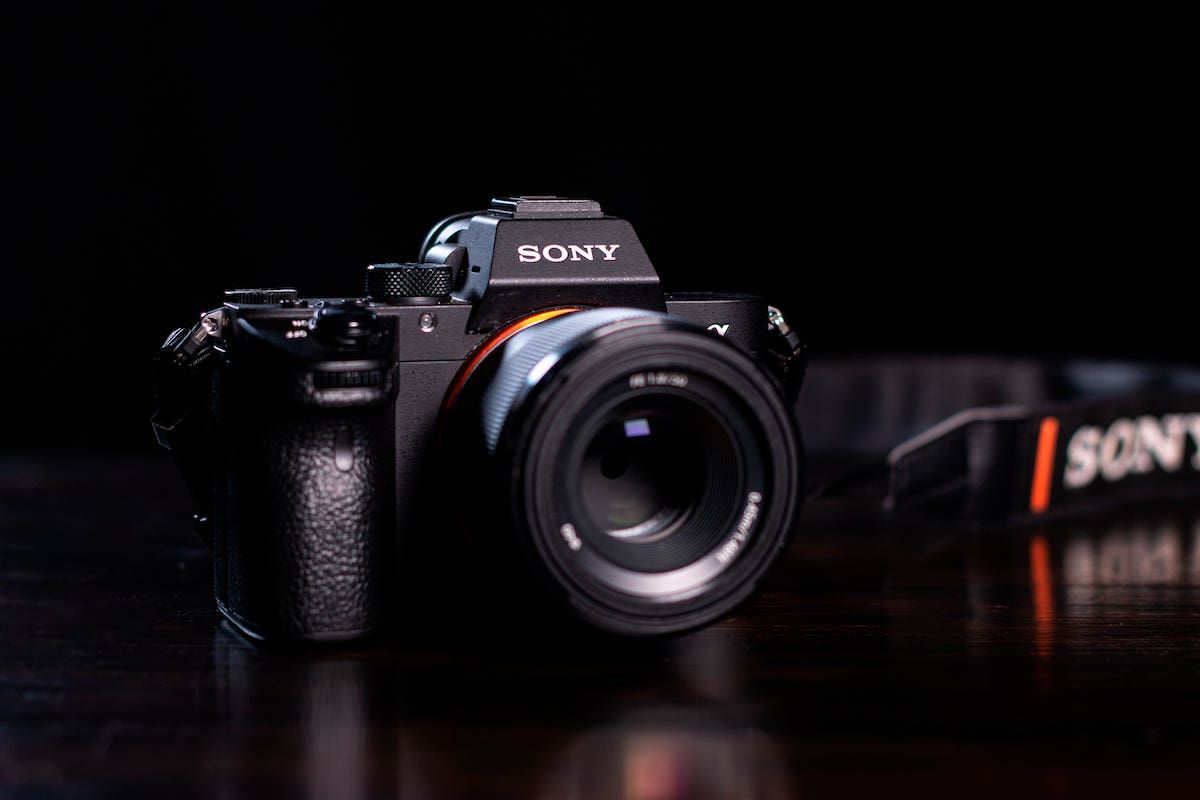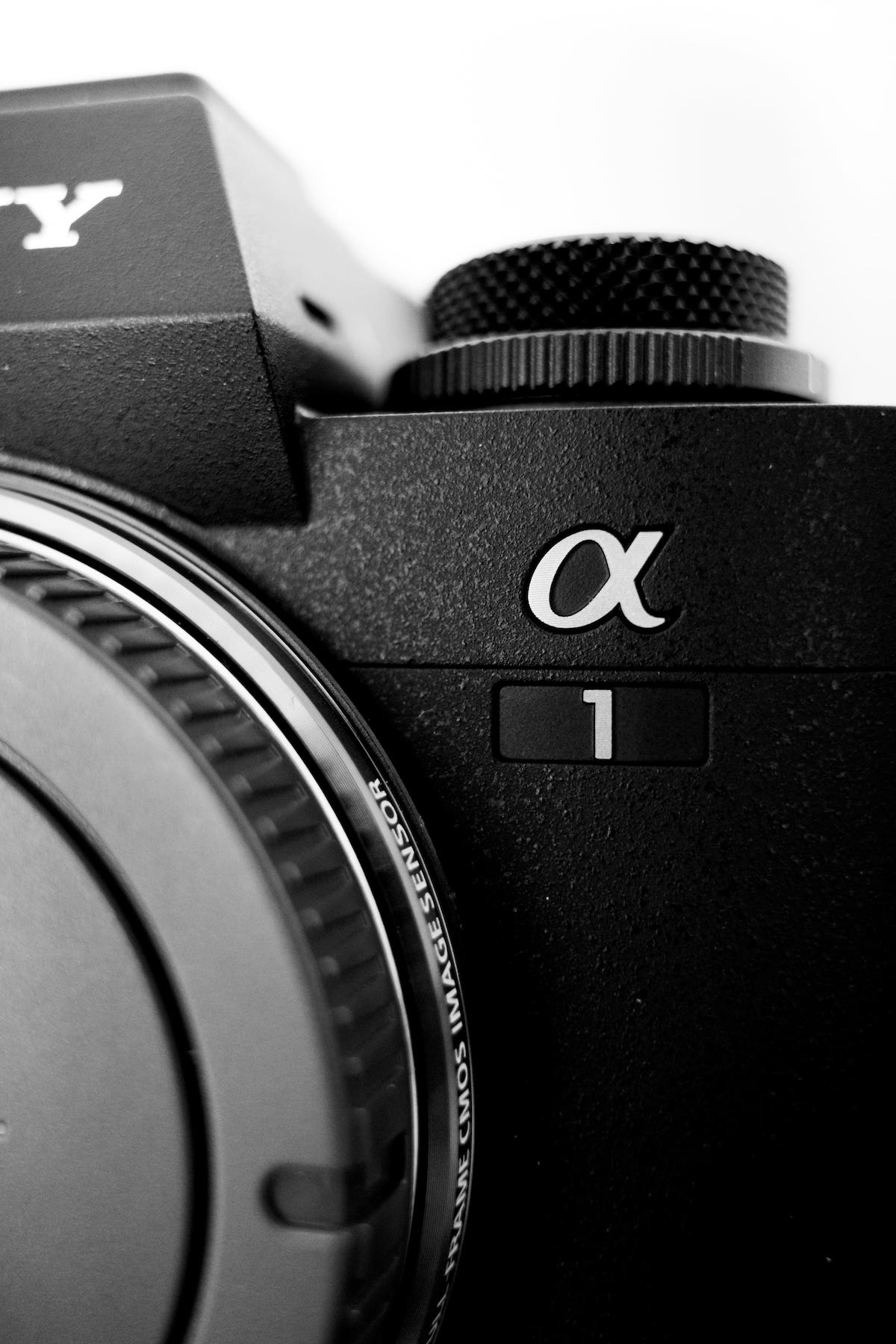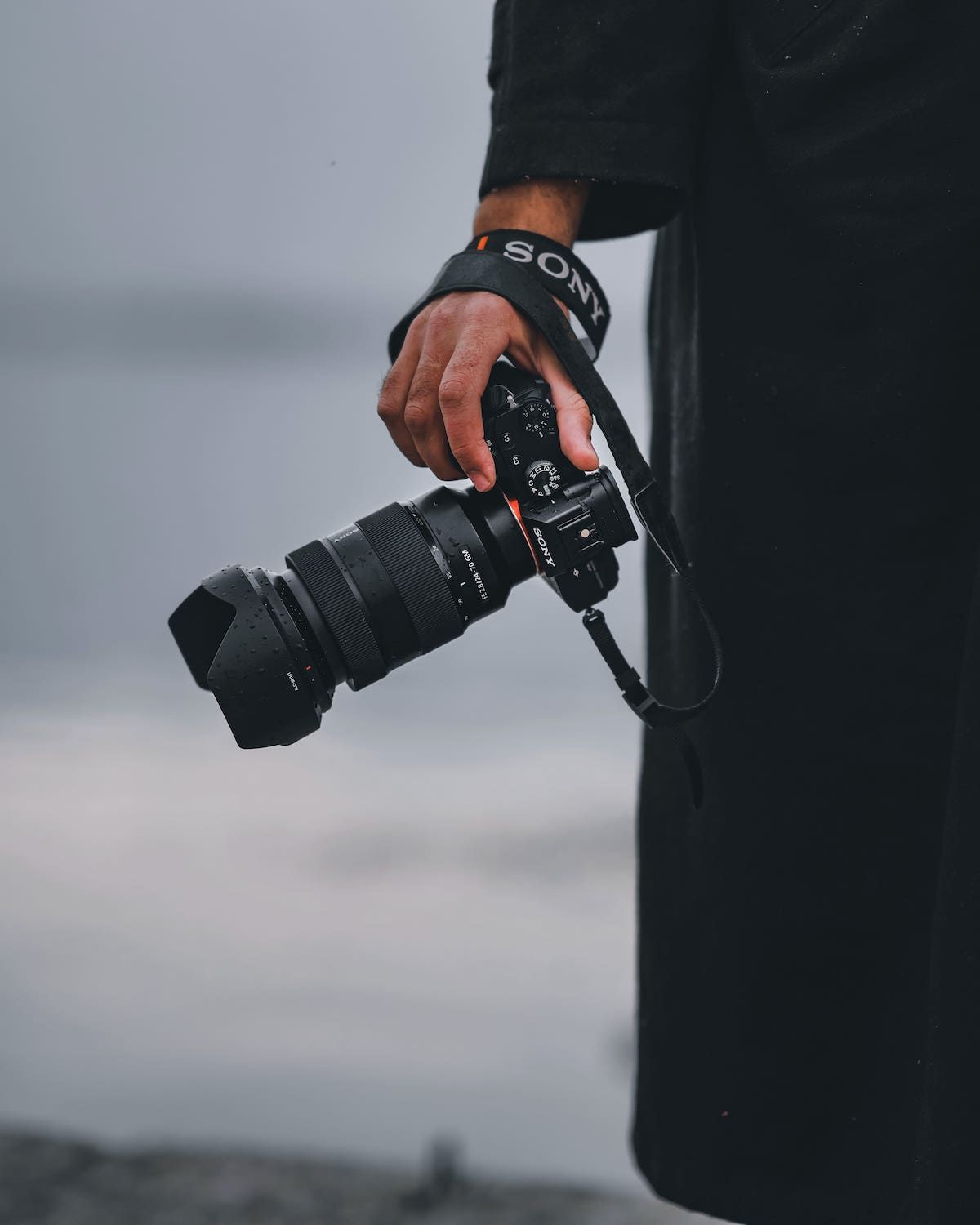The 12 Best Sony Cameras & 5 Ways Sony Differs from Other Brands
Rent film gear from local filmmakers.

Rent film gear from local filmmakers.
If you're looking for the best Sony camera, you might find yourself at odds – with many capable ones in this brand's range, and it can be tricky to choose the perfect one!
We've compiled a list of the top 12 Sony cameras to look out for in 2025!
Read on to discover them all and make up your mind about the camera for your next creative project.
And don't forget: the hunt for gear doesn't end with a camera. There's much more to camera equipment – discover what else you need to have in your kit in this ultimate guide.
12 of the best Sony cameras
1. Sony A7 IV
The Sony A7 IV is an excellent gear with outstanding image quality, great levels of detail, and extensive dynamic range.
Its autofocus is powerful and straightforward to use – for most subjects, point the AF at the object you're shooting and be confident that the camera will track it and focus on the right place.
The A7 IV is also equipped with powerful video capabilities and is a fantastic option for shooting studio videos.
The A7 IV can record a 10-bit 4:2:2 video internally to capture much color information, with which you can work in detail in post-production.
Key specs:
- 33MP BSI CMOS full-frame sensor
- Up to 10 fps shooting in lossy Raw with extensive buffer
- In-body stabilization rated up to 5.5EV
- Full-width oversampled 4K from 7K, up to 30p
- 4K/60p in Super35 / APS-C mode
- 10-bit video or HEIF stills capture
- 3.69M dot OLED viewfinder
Type: Full-frame Mirrorless
User level: Beginner, enthusiast
Pros:
- Excellent image quality
- 4K 60p video
- Super-responsive AF
- Extensive external controls
Cons:
- Relatively slow shooting speeds
- 6fps burst shooting at the highest quality settings
- Omits Pixel Shift multi-shot mode

2. Sony Alpha A7R IV
The Sony Alpha A7R IV has excellent autofocus with the Real-time Tracking option, allowing the cameras to transition from subject tracking to Eye autofocus smoothly and back with no bug.
The A7R shoots up to 10 frames per second and shoots 4K video from the full width of its sensor or an APS-C/Super 35 crop.
Top-notch high ISO performance and robust in-body stabilization add to the many great features of this camera.
Wedding, landscape, and portrait photographers would not regret getting the A7R IV, as this one is the major player in its range.
Key specs:
- 61.2MP BSI CMOS full-frame sensor
- Powerful AF tracking system
- 10 fps burst shooting
- 5.76M dot OLED viewfinder
- 4K video from full sensor width
- 4 or 16-shot high-resolution modes
- S-Log 2, S-Log 3, and 'HLG' video modes
Type: Full-frame mirrorless
User level: professional
Pros:
- Real-Time tracking autofocus
- 5-axis image stabilization
- Crisp EVF
- Tilting touch LCD
- Dual UHS-II slots
Cons:
- Lower-pixel cameras are better for video capture
- Phase detection doesn't extend to the edge of the frame
3. Sony ZV-1
The Sony ZV-1 is probably the best compact vlogging camera you can get now.
A great mix of a bright lens, fantastic autofocus and side-flipping screen make it a great pocket video option.
In addition, the ZV-1 offers a 3.5mm microphone port, making it easy to record good-quality sound to match the videos.
Unlike the Sony RX100 series, the ZV-1 lacks an electronic viewfinder but brings other features like Real-time Eye autofocus.
Again, let us emphasize: vloggers will find this camera a dream gear thanks to its compact, lightweight design and the ability to turn it around to adjust the settings while recording.
The ZV-1 also effectively smooths out the camera shake, which is an excellent addition to its vlogging-centered capabilities.
Key specs:
- 20 megapixel 1" BSI CMOS sensor
- Fully articulating, 921K dot, 3" touchscreen display
- 4K/30p, 1080p/120p and high-speed modes up to 960fps
- Directional 3-capsule microphone with windscreen
- Excellent autofocus in stills and video
- Bluetooth and wi-fi for image and video transfer
Type: APS-C mirrorless
User level: enthusiast
Pros:
- Class-leading autofocus
- Hotshoe and 3.5mm mic port
- The side-flipping screen is ideal for video
- Compact size
- 4K video capture
Cons:
- Average video stabilization
- Limited touchscreen
- Micro USB rather than USB-C
- No in-camera flash

4. Sony A7S III
The Sony A7S III offers stunning capture of indoor stills and decent images shot in dimly lit environments.
The camera delivers excellent customizable autofocus with eye-tracking for animals and humans. The A7S III has a higher-resolution sensor than other cameras from this series, making it a suitable choice for photographers looking for super-sharp images.
This Sony camera will be one of the top solutions for landscape photography with its detailed, color-accurate images low in visual noise.
In addition, the lens allows a decent amount of light and gives you more flexibility when shooting in low-light environments.
Key specs:
- 12MP BSI CMOS sensor
- On-sensor phase detection
- ISO 80-102,400 (expandable to 40-409,600)
- 9.44M-dot EVF with 0.91x magnification
- 4K video at up to 120p, 60p for at least an hour
- 16-bit Raw video output at up to 60p
- Fully articulating LCD
- 5-axis in-body stabilization with SteadyShot active mode
Type: APC-S mirrorless
User level: Intermediate, Professional
Pros:
- Class-leading low-light video
- Fully articulating touchscreen
- Impressive battery life
- Face and eye detection autofocus
Cons:
- CFExpress cards are required for the best quality slow-motion video
- Video autofocus doesn't work with SLR lens adapters
5. Sony Alpha A6600
The Sony Alpha a6600 presents industry-leading autofocus tracking, unbeatable battery life, and excellent in-body image stabilization.
The camera comes with plenty of body-mounted controls and a big, comfortable grip, which makes it one of the best APS-C cameras on the market.
It can capture very detailed 4K videos, but it's the stills performance where this camera shines.
The a6600 shoots 40 RAW frames in under 4 seconds – this is a camera that experienced photographers, especially those focused on stills, will get the hang of in no time.
Key specs:
- 24MP APS-C CMOS sensor
- Advanced, capable subject-tracking autofocus
- In-body image stabilization
- 2.36M dot OLED electronic viewfinder
- 0.9M dot tilting touchscreen
- Wi-fi for image transfer and NFC
- 4K video capture with log profiles
- USB charging
- 810-shot battery life (per CIPA)
Type: APS-C mirrorless
Pros:
- Excellent JPEG and Raw image quality
- Class-leading AF tracking is perfect for photographing people
- Good video quality
- Unmatched battery life
- In-body image stabilization
- Extensive customization options
Cons:
- A single UHS-I card slot means the buffer takes a long time to clear
- Cannot switch to video or exit burst mode while the buffer is clearing
- Significant 'jello' effect in 4K/24p mode or important crop in 30p mode

6. Sony A1
The Sony A1's capabilities cover almost every photography niche thanks to the high-resolution sensor, high-speed burst shooting, quick autofocus, excellent connectivity, and 8K raw video capture.
Being considered the most versatile professional camera, the A1 offers standard and silent shooting, making this camera an excellent choice for portraits, events, and wildlife photography.
In addition, this camera performs equally well in studios, open-air events, jungles for wildlife shootings, and even filmmaking sets.
Key specs:
- 50MP full-frame CMOS sensor
- 30 fps burst shooting with an electronic shutter
- 8K/30p video recording with Log and 4K Raw video out over HDMI
- 9.44M-dot OLED electronic viewfinder with 0.9x magnification
- 3.0" tilting touchscreen with 1.44M-dot resolution
- Full-size HDMI port, headphone/mic ports, USB-C port with 10 Gb/s transfer speeds
- Weather-sealed body
- Weight 737g
Type: APC-S mirrorless
User level: expert
Pros:
- Captures incredible detail
- Fast AF
- Super-speedy burst shooting
- 5-axis stabilization
- High-magnification viewfinder
Cons:
- The rear display could be better
- 8K video chews through battery
7. Sony Cyber-shot RX100 VII
The Cyber-shot RX100 VII is probably one of the most capable pocket cameras ever made because of its video and still performance.
The camera delivers strong image quality, great details in 4K video capture, class-leading autofocus, retractable viewfinder, and a good LCD screen.
The body's built is high-quality and compact, making it easy to carry around and slip into your pocket.
The Cyber-Shot RX100 VII will perform great in travel photography, and any form of photography that involves moving subjects – the RX100's wide shutter speed range and autofocus system make it easy to capture long-exposure shots and track moving objects.
Key specs:
- 20MP 1"-type stacked-CMOS sensor with phase detection and built-in DRAM
- 24-200mm equivalent F2.8-4.5 zoom
- 20 fps continuous shooting with full autofocus and auto-exposure, and no blackout
- Seven frames, 90 fps' single burst' mode
- Retractable 2.36M-dot EVF with 0.59x Equiv. magnification
- 3" touchscreen LCD (flips up 180° or down by 90°)
- Oversampled UHD 4K video (up to 5 min clips in standard temperature mode)
- Combined lens and digital 'Active' stabilization mode in video
- High-speed video at up to 1000 fps
- Intervalometer
- Wi-fi with Bluetooth and NFC
Type: fixed-lens compact camera
User level: beginner, enthusiast
Pros:
- Sharp 8x zoom lens
- Electronic viewfinder
- 1-inch sensor design
- 20fps capture with subject tracking
- Eye detection for people and pets
- Tilting touch screen
- 4K video with an external microphone port
Cons:
- You can't start a video while images are writing on a card
- Limited touch functions

8. Sony Cyber-shot RX10 IV
Another Cyber-shot on our list – the RX10 IV, offers a vastly improved image quality compared to other bridge models and the best-in-class capture speed and ability to shoot at 24fps with continuous autofocus.
Although this camera won't be an excellent option for action video, it will do its job fine with stills thanks to its fantastic image quality, especially in JPEG – excellent dynamic range and minimal noise at higher ISO levels contribute to its good performance.
Key specs:
- 20MP 1"-type stacked BSI-CMOS sensor
- 24-600mm equivalent F2.4-4 stabilized zoom lens
- 24 fps burst shooting in JPEG + Raw, with full AF and AE
- 315-point phase-detection autofocus system covers 65% of the frame
- Detailed 4K video capture with well-controlled rolling shutter
- High frame rate video capture
- Touchscreen
- Bluetooth connectivity
Type: SLR-like (bridge) camera
User level: beginner, enthusiast
Pros:
- 25x zoom lens
- Large 1-inch sensor
- Phase detect autofocus
- 24fps Raw capture with tracking
- Dust- and splash-resistant design
- Touch LCD and EVF
Cons:
- No in-lens neutral density filter
- Hood blocks flash at wide angles
- You can't start a video when the still buffer is in use
9. Sony Alpha A6400
The Sony Alpha a6400 is a dream pick for bloggers, vloggers, and independent creators – its still image performance is a marvel, and 4K video capabilities are even better.
With its 180-degree screen and eye autofocus, the a6400 is a perfect camera for single-handed video capture.
Impressive image quality, seen in sharp pictures and no visual noise, makes this camera an excellent choice for various photographic needs, especially travel photography.
It also offers a great autofocus system that allows the camera to track subjects easily and a minimum shutter speed that makes it suitable for long-exposure shots.
Key specs:
- 24MP APS-C sensor
- 425-pt phase-detection AF system with Real-Time Tracking
- Tilting screen, 180° up, 90° down
- 2.36M-dot electronic viewfinder
- New Bionz X processor
- ISO range from 100-32000
- 11fps burst shooting
- 4K/30p video capture
- Mic input, no headphone output
- 410 shots per battery charge (per CIPA)
- Wi-fi with NFC and Bluetooth
Type: APS-C mirrorless
User level: Enthusiast, professional
Pros:
- Versatile autofocus system
- Great image quality
- Compact body
- Quick, accurate autofocus
- 11fps continuous drive
- Large, sharp EVF
Cons:
- Omits in-body image stabilization
- Short battery life
10. Sony Cyber-shot WX220
We love Sony Cyber-shot cameras, and you?
This pocket-sized model is super slim and compact, but don't get discouraged by its size – the WX220 packs excellent imaging capabilities with its 18.2 megapixel Exmor R CMOS sensor and 10x optical zoom G Lens.
Cyber-shot WX220 produced bright, colorful photos with good exposure and optical image stabilization built in its small metal body.
It also delivers high-speed shooting at 10 fps, full HD video capture with stereo sound, wi-fi connectivity, and is generally very easy to use.
This camera is perfect for beginner photographers or casual snappers who want to shoot and share images quickly.
Key specs:
- 18MP - 1/2.3' BSI-CMOS sensor
- ISO 100 - 12800
- 25-250 mm F3.3-5.9 Zoom Lens
- Optical Image Stabilization
- 3.00" Fixed Type Screen
- 10.0fps continuous shooting
- and FHD at 60fps Video Recording
- Built-in Wireless
- 121g. 92 x 52 x 22 mm
Type: Digital compact camera
User level: Beginner
Pros:
- Built-in Wireless (wi-fi)
- NFC Connectivity
- Image stabilization
- Full HD Video
- Face detection focusing
- 18.0MP high-resolution sensor
- 12.800 Max ISO
Cons:
- No articulating screen
- No built-in viewfinder
- It could be too small for some hands, with little grip
- Low levels of detail (especially shooting above ISO400)
- Small 2.7inch screen - however, this keeps it small
- Short battery life

11. Sony A9 II
The Sony A9 II is an upgrade from the A9 camera, with the newest addition being a more compelling option for sports photographers and photojournalists.
The A9 prides itself on its hybrid focus points spread out all over the viewfinder – when fast-moving subjects are being tracked in the frame, you can forget the worry about the autofocus losing them.
In addition, the A9 II delivers 20fps continuous shooting, excellent image stabilization, and the ability to shoot 4K video.
As a result, this camera would be an ideal fit for any action photography.
Key specs:
- 24MP full-frame stacked sensor with 93% autofocus coverage across the frame
- 20 fps continuous shooting with full AF
- 5.5-stop (CIPA rated) 5-axis image stabilization
- Dual UHS-II SD card slots
- 3.69M-dot OLED viewfinder (1280 x 960 pixels) with up to 120 fps update
- 1.44M-dot rear touchscreen LCD
- Oversampled full width UHD 4K/24p video (1.24x crop for 30p); no Log option
- Battery CIPA rated to 690 shots
- 678g
Type: APC-S mirrorless
User level: Professional
Pros:
- Blistering burst shooting
- Incredible AF system
- Unrivaled connectivity
- No viewfinder blackout
- Blackout-free capture at 20fps
- Superlative autofocus system
- 24MP full-frame sensor
- Dust and splash protection
Cons:
- Fiddly menu system
- No XQD/CFexpress support
- Limited touchscreen functionality
- No S-Log video profiles included
12. Sony A6100
The a6100 is an entry-level camera, perfectly suitable for beginners and people who chase attractive images but don't consider themselves photographers.
This camera comes with a powerful autofocus system with subject tracking, stunning color performance, and excellent video capabilities – it's generally easy to use and lets the users focus on what they're shooting and not get distracted by the abundance of complicated settings.
Key specs:
- 24MP APS-C CMOS sensor
- Advanced AF system with highlight dependable subject tracking
- 1.44M dot OLED electronic viewfinder
- 0.9M dot LCD tilting rear touchscreen
- Wi-fi for image transfer to smart devices (with NFC for quick connection)
- 4K video capture
- USB charging
Type: APC-S mirrorless
User level: beginner, enthusiast
Pros:
- Light and compact
- Built-in EVF
- Tilting touch LCD
- Superlative autofocus
- Big choice of lens
- 4K video
Cons:
- The charging port isn't USB-C
- No IBIS for video
- Limited touchscreen functions
- Relatively low-spec LCD and EVF
5 ways Sony cameras differ from other brands

1. Impressive autofocus system (+)
- A fast Hybrid AF system that combines phase detection autofocus technology with contrast detection autofocus
- Able to track subjects with ease with pinpoint accuracy
- Delivers tack-sharp images even in low light conditions
2. Often more compact (+)
- Lighter and smaller camera bodies
3. Wide selection of lenses (+)
- All Sony mirrorless camera bodies use an E-mount for the lenses
- All E-mount lenses are cross-compatible between the mirrorless camera bodies
4. Unintuitive menu systems (-)
- It takes considerable time to locate the correct function
- Too big of a variety of settings which makes the menu too complex
5. Limited touch screen functionality (-)
- A touchscreen can't operate some cameras
- Sometimes you cannot adjust all settings on the touch screen if the camera has one
Rent or subscribe to a Sony camera on Wedio
Now that you've acknowledged yourself with all the main features and capabilities of the Sony cameras in this list, it's time to move on to the next step.
Give a Sony camera a test drive and see which one does its job best! Rent or subscribe to Sony cameras through Wedio here.
About the instructor
Gustav Sloth
Filmmaker
Aarhus, Denmark
Gustav Idun Sloth is a filmmaker and a co-founder of Movimentum together with Marcus Hasselgaard. They are two creative minds who are passionate about making movies and telling stories.
FAQs
Which Sony camera is best for stills?
Sony A7S III and Sony Alpha A6600 are the best stills-performers.
Does Sony make the best cameras?
Sony’s cameras pride themselves on their impressive autofocus systems, compact size of camera bodies, and wide selection of lenses. However, this is balanced out by rather unintuitive menu systems and limited touch screen functionality.






















